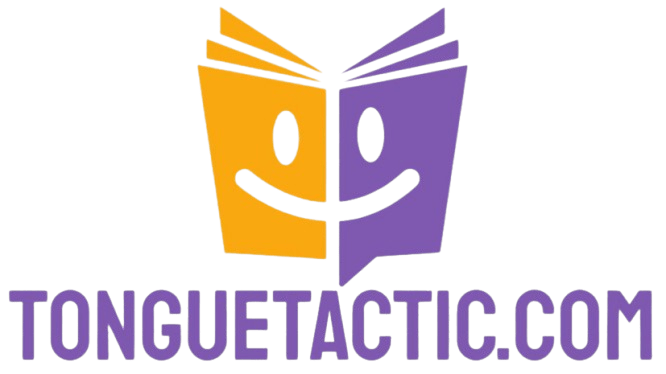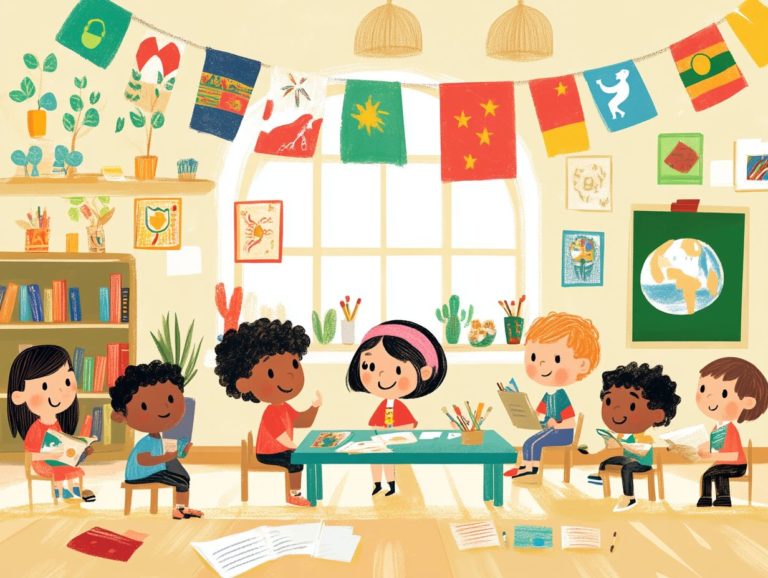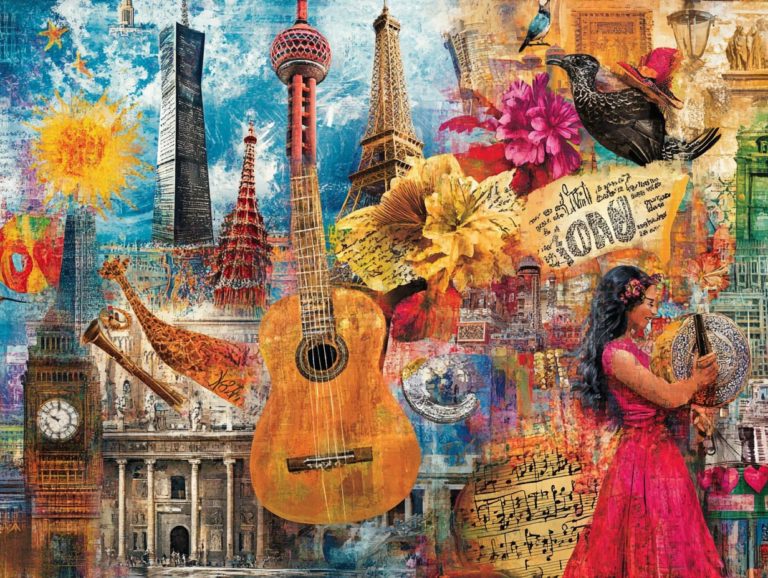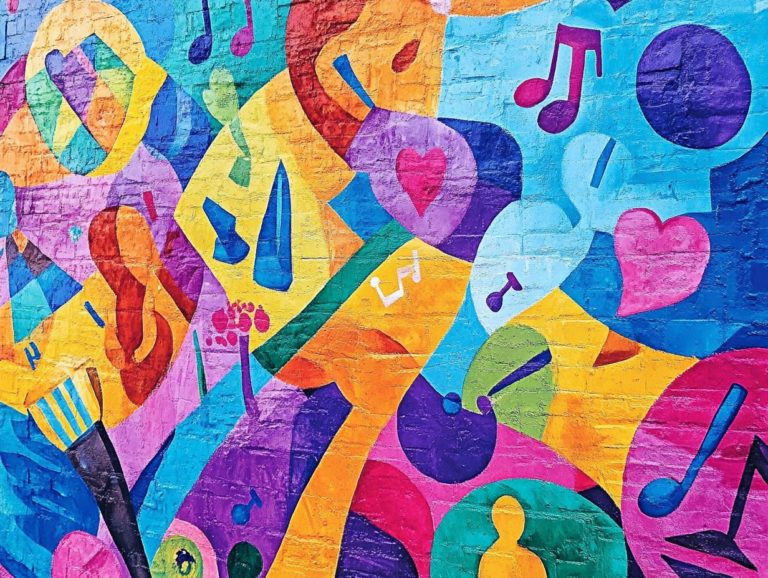how global issues affect language and culture
In a rapidly changing world, global issues like climate change, migration, and technological advancement strongly impact language and culture.
These challenges reshape how people communicate and change how we see ourselves and our traditions. This article delves into the intricate relationship between language and culture, examining how these global issues affect them, the efforts made to preserve these essential elements of human life, and the adaptive strategies communities adopt in response.
Join us on an exciting journey to discover the dynamic interplay between language, culture, and the pressing global challenges you encounter today.
Contents
- Key Takeaways:
- Impact of Global Issues on Language and Culture
- Language and Culture Preservation in the Face of Global Issues
- Adapting Language and Culture in Response to Global Issues
- The Role of Language and Culture in Addressing Global Issues
- Frequently Asked Questions
- How do global issues affect language and culture?
- What is the relationship between global issues and language diversity?
- How does globalization affect language and culture?
- How do environmental issues affect language and culture?
- What role does language play in addressing global issues?
- How can individuals preserve their language and culture in the face of global issues?
Key Takeaways:
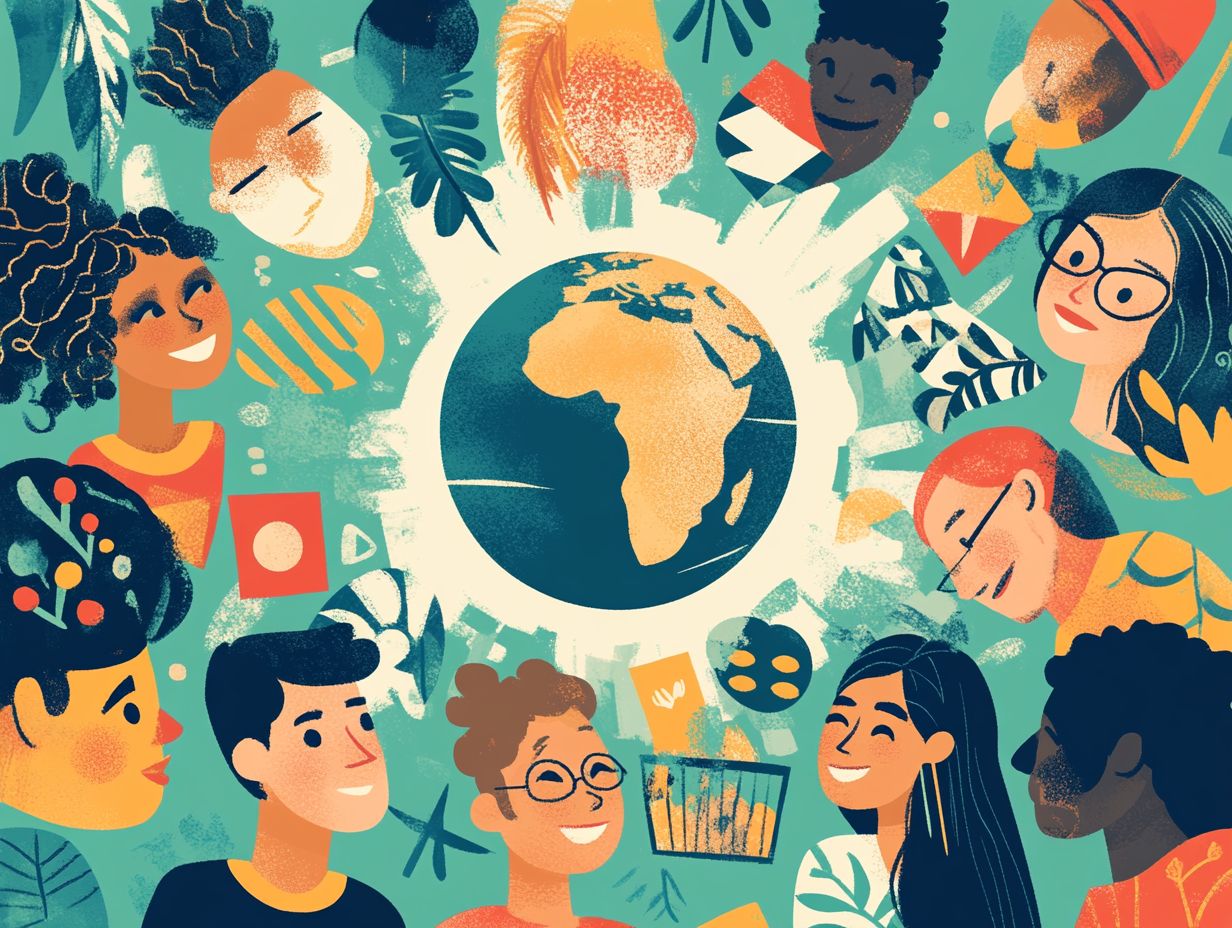
Global issues have a significant impact on language and culture, causing changes and adaptations in both. Understanding the impact of globalization on local languages highlights the efforts being made to protect language and culture in the face of these challenges, as they are vital parts of our identity and heritage. Language and culture also play a crucial role in addressing global issues, providing unique perspectives and solutions to complex problems.
Defining Global Issues
Global issues like cultural diversity and immigration shape American culture and societal acceptance, impacting both you and your fellow citizens. These challenges can lead to language barriers and create an identity crisis in our rapidly evolving society.
As you navigate these transformations, the implications extend far beyond statistics; they weave into daily life, creating a blend of cultures that can enrich or strain community cohesion.
For instance, you may witness immigrants facing educational challenges struggling to access resources or adapt to different societal norms. These obstacles complicate their learning journeys and affect their self-esteem and sense of belonging in unfamiliar environments.
The lack of support for English language learners can hinder their academic performance and future opportunities, ultimately shaping the broader cultural landscape and threatening the vibrant diversity that defines modern America.
Understanding the Relationship between Language and Culture
The relationship between language and culture is intricate. The idea of linguistic relativity suggests that the language we use shapes how we think and our cultural values. This connection becomes clear as you consider how language development influences social norms and communication across diverse cultures.
By diving into this interplay, you can appreciate how specific language structures reflect different ways of thinking and social structures within communities. For example, some cultures have words for emotions or concepts that others lack, providing deeper insights into their social fabric.
These language differences contribute to a distinct cultural identity, where language serves not just as a communication tool but as a lens through which individuals view and interpret their world.
Examining language practices reveals the complexities of cultural identity, highlighting how words are rich carriers of meaning deeply rooted in shared experiences and values.
Impact of Global Issues on Language and Culture
Global issues significantly influence language and culture, especially in multicultural societies where cultural diversity and the presence of immigrants create a rich yet intricate tapestry of communication practices.
These changes can create language barriers that make acceptance harder and shape educational outcomes for English language learners and other marginalized groups.
Examples of How Global Issues Affect Language and Culture
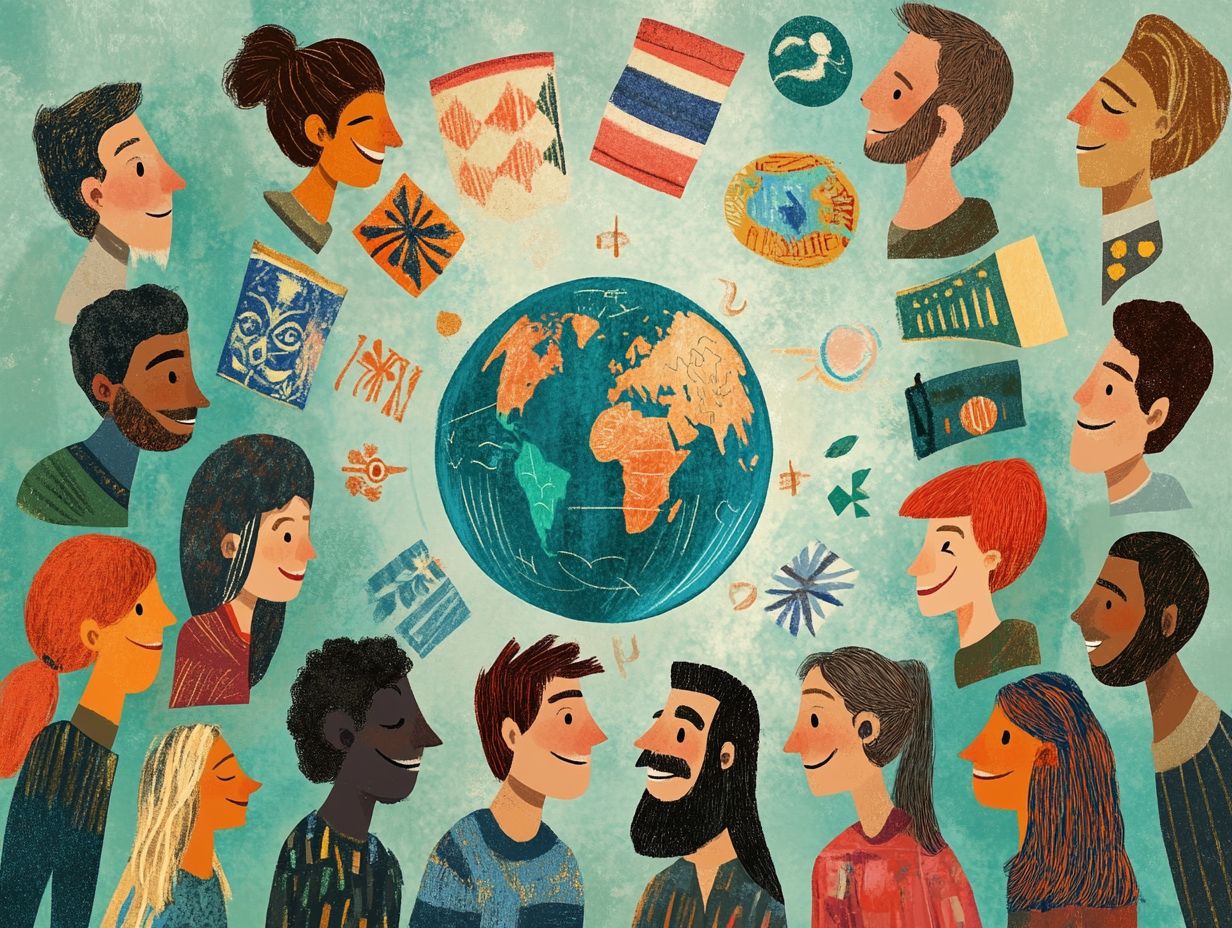
Various global issues present themselves through vivid examples that highlight their impact on language and culture.
Consider the experiences of immigrants from diverse backgrounds who struggle with language barriers in educational settings. For instance, Chinese and Middle Eastern immigrants navigate their unique cultural values while attempting to adapt to American society.
These challenges become evident in classrooms. Students struggle with the vocabulary necessary for academic success and the subtleties of social interactions.
Hispanic immigrants may face prejudice that intensifies feelings of isolation. This makes it more difficult for them to engage fully in educational environments.
Similarly, African refugee communities often feel pressured to quickly join new societal norms. This can lead to a loss of their native languages and cultural practices.
This struggle doesn t just affect their sense of identity; it also shapes the cultural landscape of the broader community. It influences everything from cuisine to local festivals.
Language and Culture Preservation in the Face of Global Issues
Today, global issues are more pressing than ever! The preservation of language and culture stands as a crucial concern. This is particularly true for immigrant families who are diligently working to uphold their cherished heritage while navigating the complexities of new societal norms.
Their endeavors to safeguard these cultural practices often align with educational initiatives designed to promote understanding and acceptance within diverse communities.
Efforts to Preserve and Protect Language and Culture
Efforts to preserve and protect language and culture often involve educational programs that engage immigrant communities and foster a deep sense of belonging essential for maintaining their unique cultural identities.
Initiatives like bilingual education, cultural festivals, and community workshops play pivotal roles in this endeavor. Bilingual education means teaching students in two languages.
Educational institutions are taking the lead by offering specialized courses that delve into the history and significance of various languages. These courses allow individuals to connect with their heritage on a profound level.
Community organizations also host storytelling sessions and language clubs where people can practice and celebrate their native tongue. These programs create supportive environments that teach language skills and instill a sense of pride in cultural heritage.
Collaborations with local governments often yield grants that fund projects dedicated to safeguarding linguistic diversity. This ensures that individuals and future generations have access to their rich cultural roots.
Adapting Language and Culture in Response to Global Issues
Adapting language and culture in response to global issues is essential for immigrants. They navigate the complexities of their new environments while preserving their cultural identities.
This process often involves adjusting communication practices and blending cultural values. Ultimately, this fosters smoother integration into their new communities.
How Language and Culture Change in the Face of Global Issues
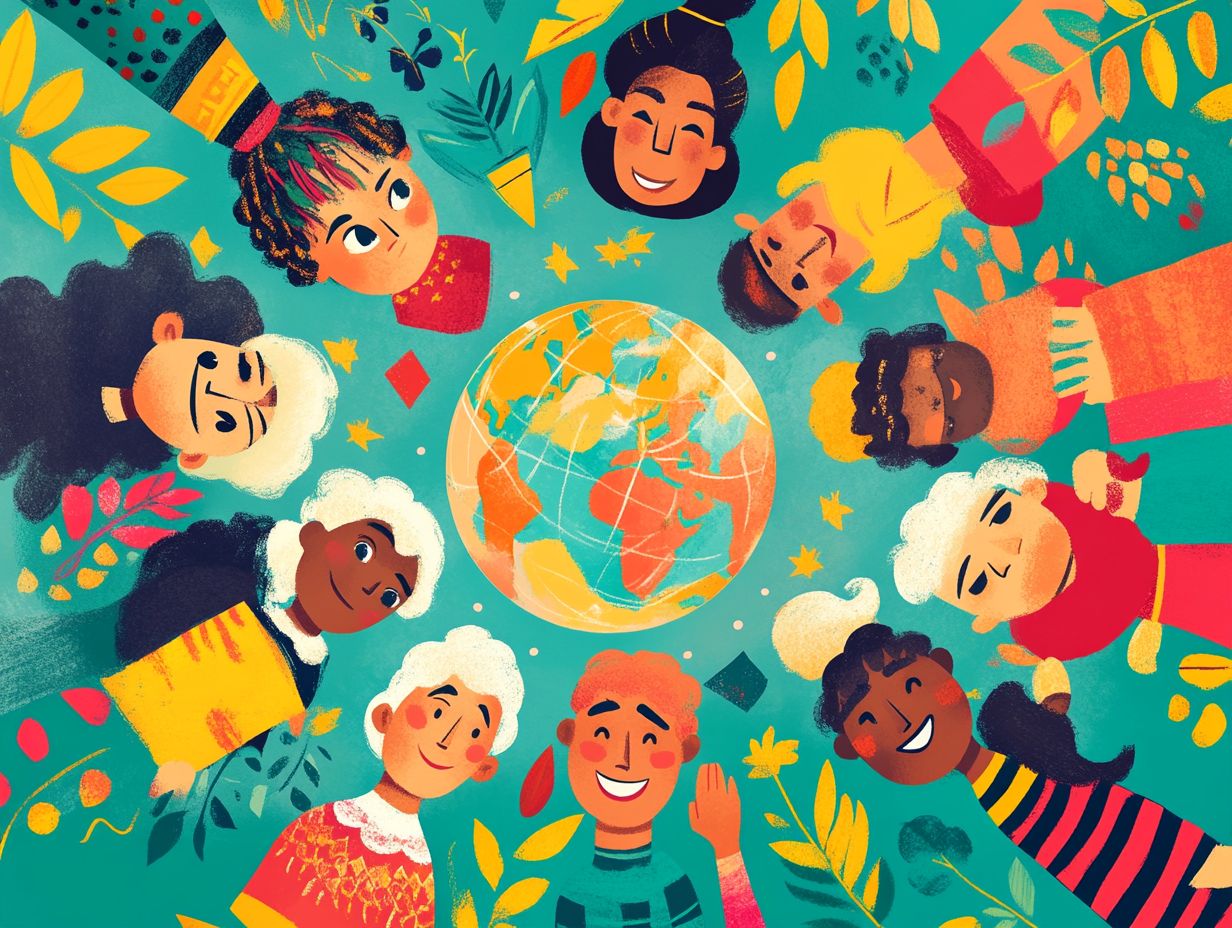
Language and culture undergo profound transformations in response to global issues. These changes influence communication competence and the ways individuals express their cultural identity.
As people navigate challenges like climate change, political unrest, and globalization, the interplay between language and culture becomes strikingly apparent. This dynamic encourages the borrowing of terms and phrases from various languages, enriching their lexicon while mirroring the evolving realities of cultural identities.
In our globally interconnected world, effective communication across diverse groups becomes essential. This prompts individuals to adapt their language usage to resonate with a wide range of audiences.
As a result, these adaptations enhance communication competence and redefine how cultural nuances are expressed, fostering a more inclusive dialogue.
The Role of Language and Culture in Addressing Global Issues
Language and culture are fundamental in tackling global issues. They serve as essential tools for communication and foster understanding among diverse groups.
By supporting education and nurturing acceptance, you can empower communities to effectively harness these elements. This bridges the gaps created by cultural diversity and language barriers.
Embracing this approach enriches collective experiences and paves the way for meaningful connections in an increasingly interconnected world.
How Language and Culture Can Help Address Global Issues
Language is a vital tool for fostering cultural understanding and tackling global issues. It allows you and your community to express needs and experiences with clarity.
Engaging in educational programs and intercultural dialogues helps break down the barriers of cultural diversity and immigration. When schools offer language immersion programs, they provide vital skills. These skills help facilitate important conversations about pressing global challenges, from climate change to social justice and economic inequality.
Technology plays a crucial role in connecting diverse voices worldwide. It offers real-time translations and facilitates collaborative projects that bridge cultural divides. Through these initiatives, shared understanding can flourish, inspiring collective action and innovative solutions that reflect a rich tapestry of perspectives and experiences.
Frequently Asked Questions
How do global issues affect language and culture?
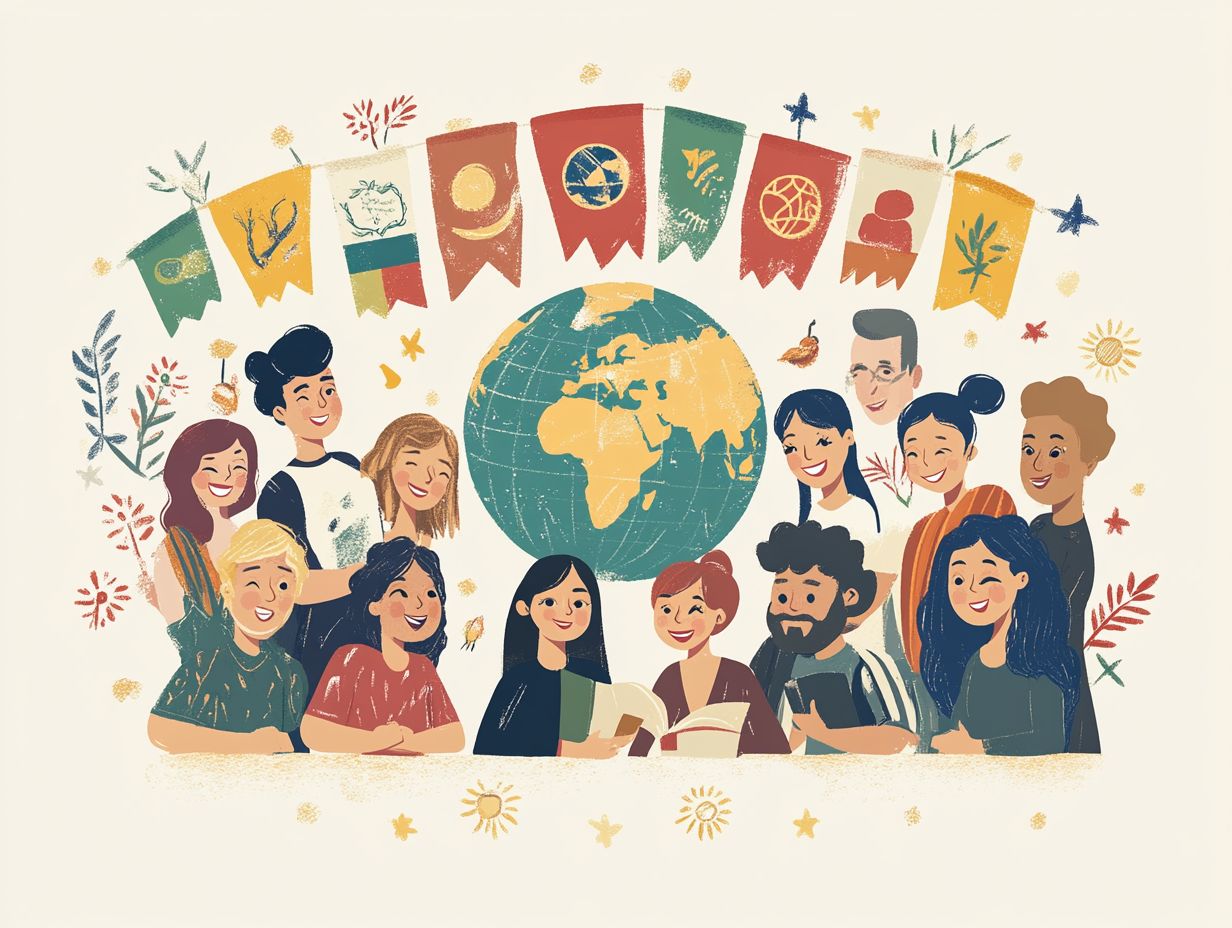
Global issues such as climate change, migration, and globalization significantly impact language and culture. These challenges change how we communicate, express ourselves, and view our cultural identity.
What is the relationship between global issues and language diversity?
Global issues can lead to increased language diversity as people from different regions and cultures connect. This interaction can result in adopting new words and phrases while preserving endangered languages.
How does globalization affect language and culture?
Globalization, through integration and connections, can positively and negatively affect language and culture. It facilitates the spread of languages and cultural practices but may also lead to homogenization and a loss of diversity.
How do environmental issues affect language and culture?
Environmental issues like deforestation, pollution, and natural disasters can harm language and culture. They disrupt traditional ways of life, leading to the loss of cultural practices and knowledge.
What role does language play in addressing global issues?
Language is crucial in addressing global issues. It enables people to communicate and collaborate towards solutions. Different languages provide diverse perspectives and approaches to tackling problems.
How can individuals preserve their language and culture in the face of global issues?
Individuals can preserve their language and culture by engaging actively in their communities, supporting language education and documentation, and advocating for the recognition and protection of their cultural heritage.
Act now to build understanding! Join a community group, participate in language classes, and make a difference together!
